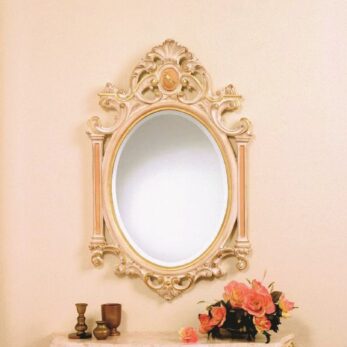Blog
The Tiffany lamp. History and curiosity by Lucilla
The History of Tiffany Lamps: An Icon of Art Nouveau Lighting
Tiffany lamps, still famous today and found in many homes, owe their name to Louis Comfort Tiffany, son of the co-founder of the renowned jewellery company featured in the famous film starring Audrey Hepburn. Louis, son of the well-known Charles Lewis Tiffany, developed a passion for glassworking early on, leading him to success with a company separate from his father’s, although he also made jewellery throughout his career.
The Tiffany lamp, a symbol of the Art Nouveau movement, has a complex and fascinating history.
The Beginning of Louis Comfort Tiffany’s Creative Journey
As a young man in his early twenties, Louis Comfort Tiffany embarked on a trip to Europe, an experience common among young American dandies of the time. During this trip, he was particularly impressed by the principles of the Arts and Crafts movement, which developed in Britain in the late 19th century. This movement emphasised craftsmanship at the expense of mass industrial production, often of low quality.
The Return to the United States and Innovation in Glass
Returning to the United States and with an important heritage, Tiffany began to apply the principles learned in Europe to glassmaking. He created furnishing accessories, particularly lamps in leaded glass, characterised by a superior brilliance compared to traditional glass.
Meeting Clara Driscoll: The Birth of the Tiffany Lamp
In its early years, the Tiffany lamp as we know it today did not yet exist. It was with the arrival of Clara Driscoll, a creative employee, that the foundations were laid for the creation of the famous lamp. Driscoll drew sketches and proposed an innovative method to Tiffany: tin soldering. Clara’s idea was to cut out the glass, coat the pieces with copper wire and solder them together with tin, thus creating the real Tiffany lamp.
The Explosion of Success
This technique led to a real exploit for the company, whose works were widely appreciated by the American nobility of the time. In addition to the famous Fravile glass vases, a Tiffany patent, handcrafted lamps under Clara Driscoll’s supervision became iconic. Her first work was the Daffodil lamp, but the Tiffany Dragonfly lamp and the Dragonfly, which won an award at the 1900 Paris World’s Fair, are also attributed to her.
The Collaboration with Thomas Edison
The collaboration with Thomas Edison, the inventor of the light bulb, gave birth to decorative lighting for all environments, a protagonist of the early 20th century.
Tiffany lamps are not just lighting elements, but authentic pieces of art that continue to enchant with their beauty and unique history. If you want to add a touch of elegance and history to your home, a Tiffany lamp is the perfect choice.


